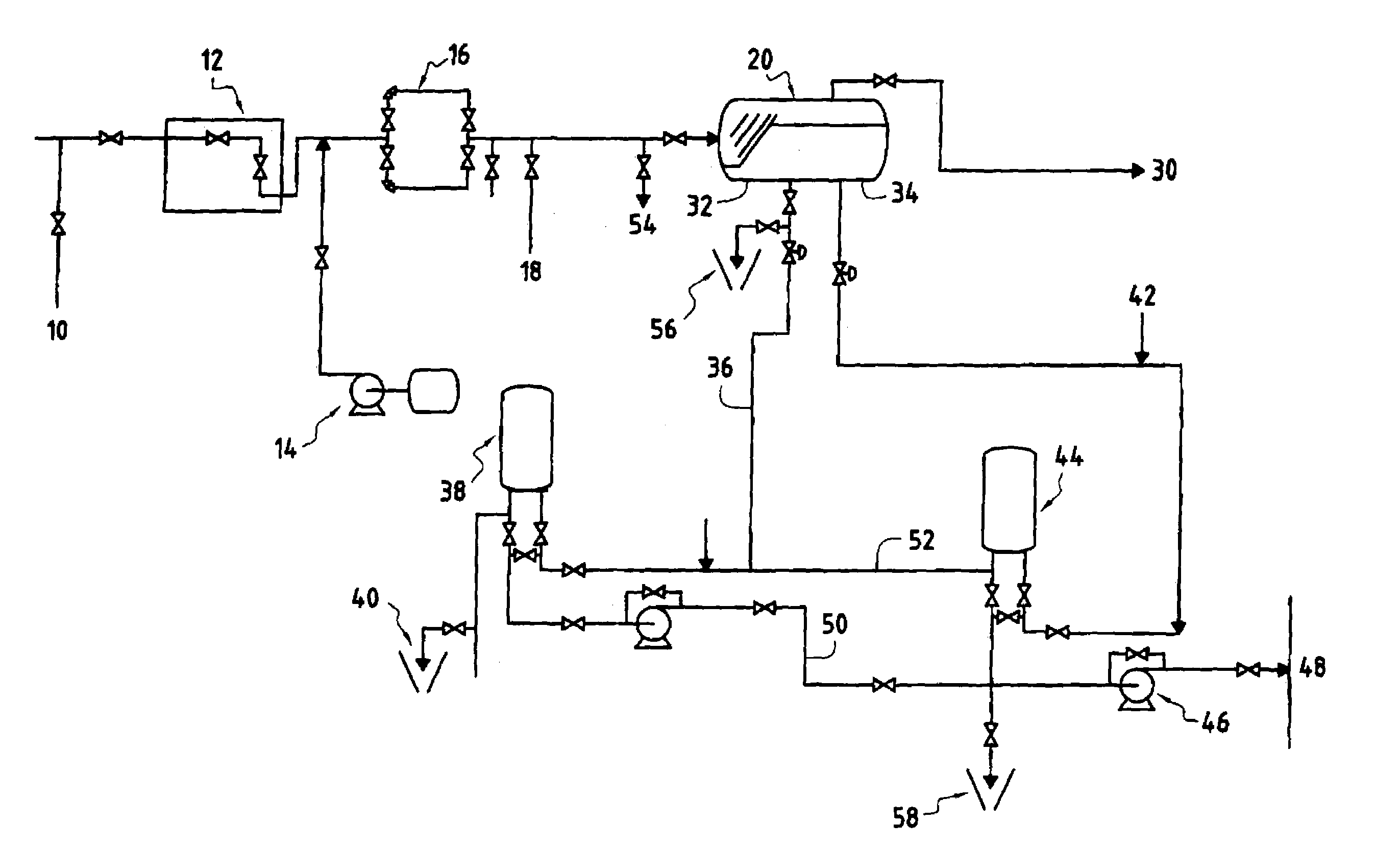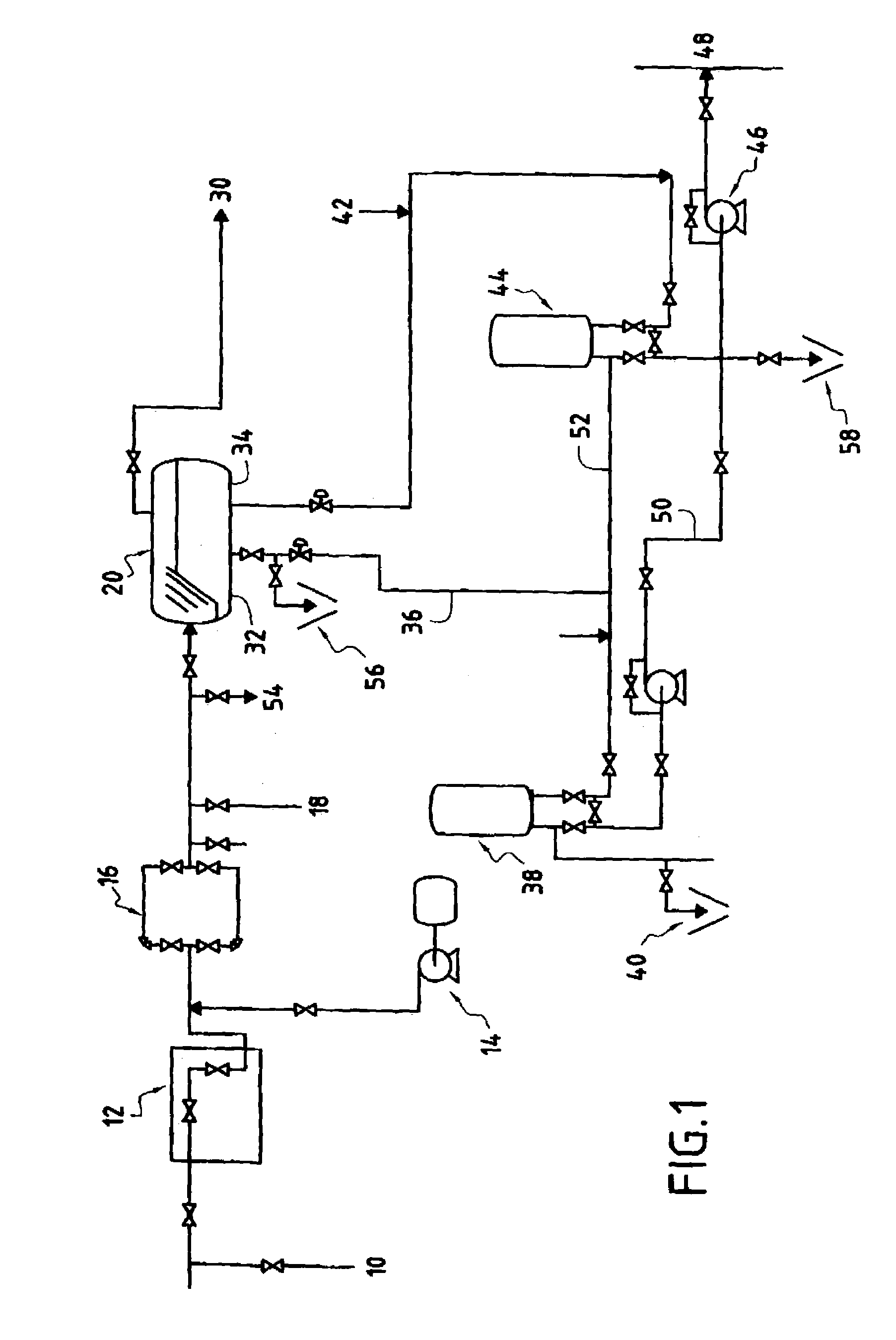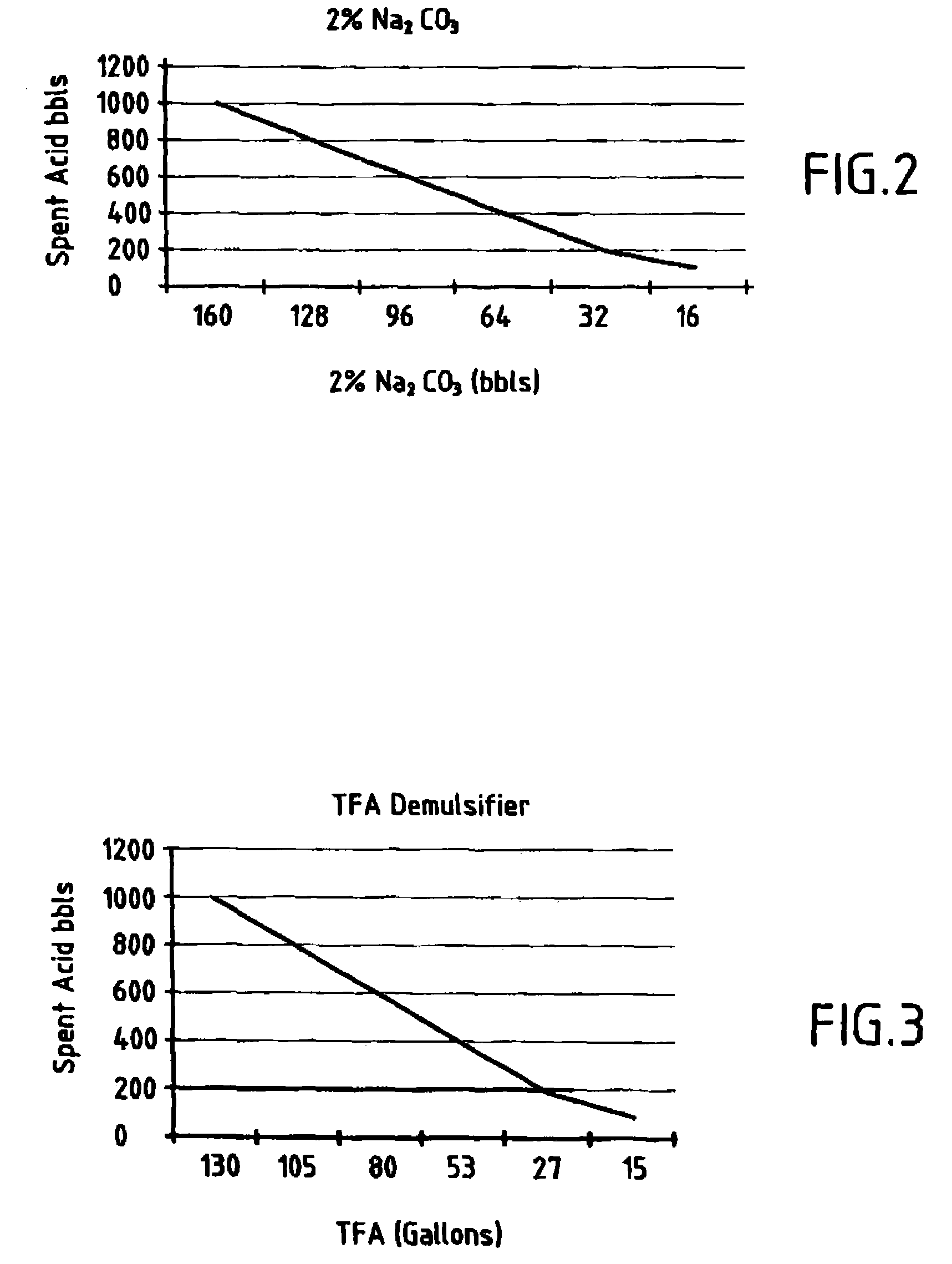Method for separating fluids
a technology of fluid separation and separation method, which is applied in the direction of separation process, other chemical processes, borehole/well accessories, etc., can solve the problems of high risk of acid corrosion of pipelines under the sea, large equipment footprint (physical size), and high cost of oil and gas lost in flaring, so as to accelerate the breaking of emulsions, reduce the oil content, and avoid the effect of gas phase flotation
- Summary
- Abstract
- Description
- Claims
- Application Information
AI Technical Summary
Benefits of technology
Problems solved by technology
Method used
Image
Examples
Embodiment Construction
I—Testing Pumps, Separator, Skimmer & Surge Tank
[0020]To achieve the aims of the invention, it is necessary to re-inject oil into the production line after spent acid is cleaned out. In order to achieve this, units for pumping live oil from the separator or surge tank are necessary to overcome the pressure in the production line especially at the start of the clean-up operation. It is also useful to have these pumps in order to achieve representative data during production well testing where it is required to have a relatively low separator pressure (to respect the choke performance / critical flow condition where downstream pressure should be 50% less than the upstream pressure).
[0021]Traditional three-phase separators work on the principle of gravity force settling and difference in gravity between the phases and the retention time of mixture. For oil and water production at 5000 bbls / day retention time in the separator is typically around 2 minutes, which can be less than the preci...
PUM
| Property | Measurement | Unit |
|---|---|---|
| Fraction | aaaaa | aaaaa |
| Fraction | aaaaa | aaaaa |
| Fraction | aaaaa | aaaaa |
Abstract
Description
Claims
Application Information
 Login to View More
Login to View More - R&D
- Intellectual Property
- Life Sciences
- Materials
- Tech Scout
- Unparalleled Data Quality
- Higher Quality Content
- 60% Fewer Hallucinations
Browse by: Latest US Patents, China's latest patents, Technical Efficacy Thesaurus, Application Domain, Technology Topic, Popular Technical Reports.
© 2025 PatSnap. All rights reserved.Legal|Privacy policy|Modern Slavery Act Transparency Statement|Sitemap|About US| Contact US: help@patsnap.com



